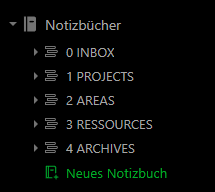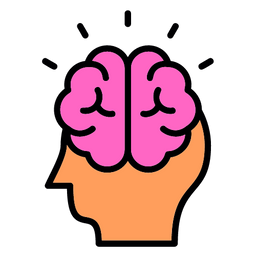Table of contents

👋 Hello friend
This week I want to talk about how to build a Second Brain. (amazon link to the book) It is made up of four simple steps:
- Capture and keep what resonates
- Organize for Action
- Distill your notes their core essence
- Express to show your Work
🧠 A second brain is a central place to store insightful ideas, concepts, and information, in an ordered and actionable fashion.
It allows you to brain-dump your thoughts.
You don't have to remember unimportant and repeating information anymore. Consequently, you have more capacity to use your first brain and think freely again.
Having built a Second brain, the author promises to have completed 80% of a project before even starting.
Let's dive in! 🏊♀️
🤯 Having built a Second brain, the author promises to have completed 80% of a project before even starting
To create an action system that helps you achieve your goals in a fast fashion: first, make sure you don't make a few of the most common mistakes:
Mistake #1 Not change the system according to your own needs
Many people think they have to do everything the way the book says and are not allowed to change anything to suit their personal needs.
Mistake #2 Have everything perfectly organized
Perfectionism keeps us from getting into action.
Mistake #3: Start writing on a blank sheet of paper
Despite having a system with your personal best thoughts, many people don't use it at the moment; it would be better too.
People tend to make these mistakes because they think the Second Brain is a final product.
As a result, they keep themselves stuck in overwhelm and finally quit by saying that it just does not work.
Before we start I want to show you which software you can use as your second brain.
So, here's how to build a Second Brain:
✍ Step 1: Capture what resonates
The first step to building a Second Brain is to capture knowledge, ideas, insights, and other things that might be valuable to you in the future.
Creating a habit of immediately capturing information. This is so important because, in only one hour, an average person has forgotten 50% of the information; within 24h, 70%, and within a week, 90% (!!).
The most common mistake that keeps people from being successful here is to make capturing connected with a lot of effort.
Instead, it would help if you made it a habit of capturing as easily as possible.
To capture information on the go, I installed the Evernote widget on my phone. If a valuable thought crosses my mind, I unlock my phone, push the widget and start writing.
For capturing highlights, you have 40-50% value for your second brain if you install Readwise.
I read an article yesterday and thought I would definitely forget this valuable information. To save it I used Reader and just had to highlight it. It connects to Evernote, so I don't even have to write a note.
Store highlights on Reader
Key takeaways
#1 Save only what resonates
#2 Have a frictionless process of capturing
#3 Have one central system (like Evernote)
🧮Step 2: Organize for action
The next step to building a Second Brain is to organize what you have captured.
This is done with a universal organizing system (which can be used everywhere: file system, cloud storage, task manager) called PARA system.
Many organizational systems organize notes from where they come from. With PARA you organize your notes based on what to do with them.
PARA consists of five folders
- Inbox (first storage place of the workflow before getting organized)
- Projects (a series of tasks that link to a goal with a deadline)
- Areas (fields of life organized into categories with a maintained standard)
- Resources (rather theoretical information based on current interests)
- Archives (notes you don't use anymore)

You can find a more detailed description of this system in Tiago Fortes's blog post.
The mistake people make is to write down too many projects. As a consequence of never even tackling one of them.
Instead, keep it to a max of 8 active projects. Make them as tiny as possible.
Let's say I want to build a website. These are the steps:
- Create an Evernote folder in PROJECTS called "Building a website"
- Search for "website" (or other keywords which may be helpful) in Evernote to put all relevant notes into "Building a website" folder
- Ask yourself where else you stored useful information which may be relevant (photos, email, docs)
- Now you have all relevant information in one folder to take action
Key Takeaways
#1 PARA can be used everywhere
#2 Focused on taking action
#3 Have max eight active projects
🌀 Step 3: Distill notes to their core essence
The third step to building a Second Brain is to distill the notes to their core essence.
This is important because, having bolded the most important information - you know what to focus on.
Should I highlight my notes immediately after having created them?
This is not the idea.
Only when knowing what projects you want to tackle should you start distilling. Only then do you know what information is essential for the project.
The process of Distilling Notes
Step #1 bold essential information
Step #2 (after some days) highlight essential information of the crucial information
Step #3 summarize the highlighted texts into three key points
Key Takeaways
#1 Decide on a project, then highlight key points
#2 Summarize in your own words
👯♀️ Step 4: Express what you have created to get feedback and build on it
And finally, the last and most crucial step to building a Second Brain is Express.
Every person has a different perspective and area where to contribute what they know. Still, many people think they have anything "special" to tell. If you are one of them, I can recommend reading the book "Show your Work."
One of the biggest concerns is perfectionism.
"When it is the way I like it, only then will I show it to the public." But everybody knows that this day will never come.
It is best to publish unfinished work. Get feedback, and build on it. Repeat.
Like the MVP:
Minimum Viable Product (MVP) is the first, minimally functional iteration of a product that is designed to learn from user feedback as quickly as possible in order to avoid undesirable developments.
In Ship30for30, I learned that writers nowadays don't spend five years writing one book.
It starts with a short Twitter thread of 30 words.
Then a short essay.
Then a blog post.
Then a video series.
And only then after having put together all the blog posts a book is created.
How else to know if the reader will like it?
Key takeaways
#1 Decide what to express, to know what to capture
#2 Make a Minimum Viable Product
#3 Show your work
That's it!
As always, thanks for reading.
Hit reply and let me know what you found most helpful this week—I'd love to hear from you!
See you on time, next time on Sunday. (Writing this post took me longer than I thought)
Have a great week!
xx Lukas
🏆 Last week's posts


Do you like this newsletter format? Show me with a thumb. 👍👎
